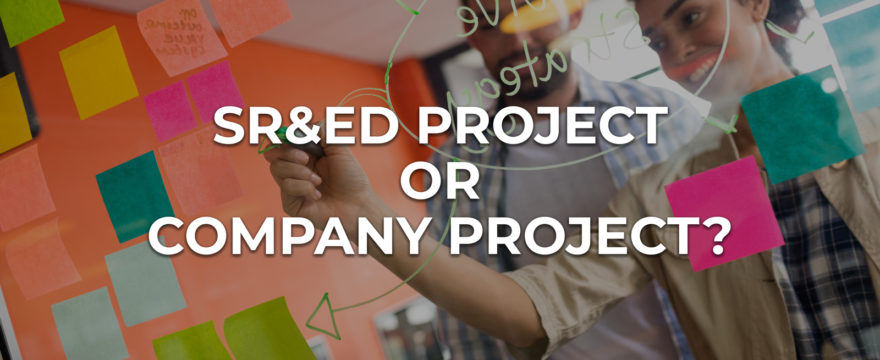
There is a widespread belief that “business as usual” can sometimes qualify as a SR&ED project, but this is a myth. SR&ED tax credits are reserved for projects that seek to innovate and make new discoveries in Canadian science and technology. However, there is often SR&ED eligible work within company projects. The lines are not always clear, so getting the most out of the SR&ED tax credits can be daunting.
Determining whether a project qualifies for the SR&ED refund requires you to answer five questions. The questions from the Canada Revenue Agency are:
- Was there a scientific or technological uncertainty?
- Did the effort involve formulating hypotheses specifically aimed at reducing or eliminating that uncertainty?
- Was the overall approach adopted consistent with a systematic investigation or search, including formulating and testing the hypotheses through experiment or analysis?
- Was the overall approach undertaken to achieve a scientific or technological advancement?
- Was a record of the hypotheses tested and the results kept as the work progressed?
Save precious time by clarifying the specifications of an SR&ED project by answering these questions before you set out to apply for the tax credit.
Defining Goals
Company projects have a diverse set of goals, designed to realize outcomes deemed important to the business. With Scientific Research and Experimental Development projects, goals are much less business and money-focused and much more knowledge and discovery-focused.
To qualify for the SR&ED tax credit in Canada, a project must resolve scientific or technological uncertainty. This isn’t the same as process improvement or even standard research and development. SR&ED projects need to start with a hypothesis and a goal that seeks to eliminate the uncertainty.
Problem vs. Uncertainty
Even if your company is experimenting with processes or trying out new things to solve a company problem, you aren’t necessarily dealing with uncertainty. An uncertainty is a gap in scientific or technological knowledge, where bridging that gap would contribute to the overall knowledge base – not just solving your particular problem.
For example, if you are working with some degree of trial and error to pinpoint a defective piece of equipment or something that isn’t running quite right, you’re looking to solve a problem – not to eliminate an uncertainty. Maybe you have uncertainty about which piece of equipment isn’t working correctly. Still, overall there is existing knowledge for solving that problem and how to fix that equipment once you identify it. In other words, if you know how to get from point A to point B, it’s not SR&ED.
This isn’t to say that business-related problems can’t lend themselves to SR&ED eligible uncertainties. Commonly, a company project may lead to or contain at least one SR&ED project. For example, price restraints or the desire to find inexpensive ways to accomplish company tasks may lead you to innovate around those tasks and pave new pathways for how to do so. If there is no openly available or widely-known way to achieve that goal, you may be looking at a SR&ED project.
Approach
In a SR&ED project, the approach must include analysis or experimentation and be carried out by someone qualified to conduct that investigation through their credentials or experience. A trial and error approach is not systematic; therefore, it does not meet the requirements for a SR&ED project. Sometimes, investigating why something did not work is what constitutes a discovery in the SR&ED world.
Recording Results
Recording results is essential in a SR&ED project. At each step, you must analyze results and keep track of your findings. If you reach an unfavorable result in a company project, you might move on to the next option, but this is not the case with SR&ED.
The Bottom Line
Most companies undertake projects and track them for a variety of reasons. Your projects may be completely or partly SR&ED eligible, which means Federal and Provincial tax programs can help you fund that project. Find out if your project is eligible. If it is, track that project according to SR&ED requirements and you will be able to do more with less of your own capital.
Don’t Wait Months to Receive Your SR&ED Refund
Many businesses apply for a tax credit and are left waiting through a long, arduous process to receive the funds sometimes costing important momentum. Easly addresses this by offering streamlined financing options that advance your SR&ED refund. Once you’ve confirmed that your projects fall into the SR&ED category, and you’ve begun to accrue SR&ED tax credits, you can apply to receive funds from Easly. Approvals take less than two weeks. Once approved, funds can be transferred into your account within 72 hours. so you can keep innovating! Easly advances are non-dilutive so you keep 100% of your equity while also kickstarting your research.
Contact us today to learn how Easly can be your R&D finance partner.
.png)
.png)
.png)
